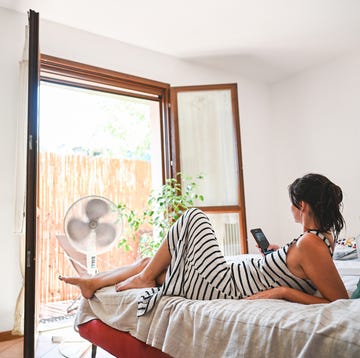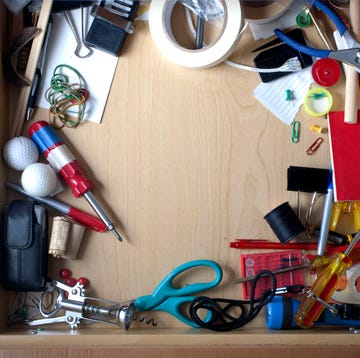How easy is it to sell your decluttered clothes – I mean, really? You read these stories about everyday people making hundreds of pounds on Vinted in their spare time, and you think – too good to be true, right? Or is it?
I recently sold a pair of used men’s Timberland boots on eBay; I got more interest than I bargained for and ended up eagerly watching the bidding war that ensued. Afterwards, I tried to repeat the process with a new pair of women’s Timberland boots (much nicer condition) but, much to my surprise, didn’t get any interest at all. What had gone wrong?
I relayed the tale at work to which everyone replied: Vinted is much easier and better for clothes. Try that instead. I hadn’t used Vinted before, so honestly, I was uneasy. But I had lots of clothes to sell, thanks to a recent wardrobe declutter (some still with the tags on), so I was willing to give it a shot. Here are 10 things I’ve learned since I entered the Vinted world:
What to read next
1. There’s a right time to sell your goods
While Sunday evening is generally best for ending auctions on eBay, Vinted is the other way around – there’s a right time to upload products. You’ll want to get this right for the best chance of selling the item promptly, otherwise it loses traction and ends up buried in the Vinted vaults. Time is of the essence here!
People tend to be most active on Vinted during the evenings (once they’re home from work) and over the weekends. Considering this, Saturday night is a good time to upload because it’s during peak time, and you can take advantage of the Sunday traffic, too, before its visibility starts to dwindle.
Although any point over the weekend has a good chance. The main thing is not to get carried away and upload your items as soon as you take your pictures! Not unless you know the traffic is good.
2. The more pictures, the better
With Vinted, the more pictures you take, the better; people are more likely to purchase if they have confidence in the condition of the item.
When I uploaded my clothes, I aimed for between 10-13 photos per item to showcase every detail of the design. From a hanger on a plain background, I’d snap the front, back, a close-up of the print/material, show the lining and any pockets and even the hook and eye. There would be shots from every angle to offer a full visual – and I’d especially focus on any damaged areas.
Of course, the brand name as well as any tags would be included in the photos, too, as would the care label, so potential buyers can see what it’s made from (natural fibres are always a selling point).
3. Be as detailed as possible in your description
When you fill in the name of the item as you upload it, the more detail you include, the better. Brand, condition, size, colour and shape can all help potential buyers to find your clothes. That means if someone is searching for a specific product, and yours fits the bill, it will more likely appear in the search. So, if it doesn’t get picked up immediately, it’s still got a chance of being found down the line.
As for the product description, as well as the obvious details, consider what you’d want to know to buy such an item and check those points are included. For instance, with a dress you might want to know the full length of the skirt. Or perhaps you’d want to know what it’s made from or whether it’s true to size. Does it come with any accessories, such as straps, or are those missing?
I even suggested the kinds of events my items would suit and tried to make my listings personable by mentioning why I was selling it. Keep the descriptions honest and filled with useful info; don’t be too blunt or you will lose buyers or get bombarded with questions.
4. Be prepared to negotiate
Do your research before you name your price; if it’s too expensive you won’t sell it, but if it’s too cheap, you’ll miss out on what you could have had. Before you decide, look up what a similar item from the same brand retails for on Vinted (in the same condition) and use this as an initial guide. Keep in mind, you’ll need to decrease this price slightly to have a good chance of selling off the bat.
However, one thing I’ve noticed with Vinted is that almost everyone wants to negotiate. Most items I’ve sold have been negotiated down to save a few pounds for the buyer, so consider that when you name your price. I’ve started pricing my items up a tiny bit as a result, so the negotiated price is more like what I had in mind in the first place. But, remember the decision is yours on whether to accept a reduced price, and keep in mind, just because you accept a reduced price doesn’t mean they will necessarily buy the item, it’s still anyone’s game! You can also knock the price down whenever you want and those that have favourited the item will receive a notification – another way to improve the likelihood of selling.
5. Tags really help
It’s not surprising, but ‘new with tags’ really is the easiest way to sell something on Vinted. Every item I listed with tags still attached sold for a good price. Although it wasn’t always instant; it would either sell within a couple of hours, or even minutes (in the case of a new set of Cath Kidston bedding), or it needed ‘bumping’ (more on this later) to get it back on to people’s radars. But in any case, a tag is worth its weight in gold. So if you have a tagged item you’re looking to sell, it’s worth giving Vinted a try.
Items without tags, even if the condition was as new, were generally much more difficult to sell – not surprising but a harsh reality. I’ve managed to sell a couple of items on Vinted that have been worn once or twice, but only with a good discount on the original price I listed them for. So, be selective and sensible with the used items you decide to list, and have patience as you sell them. Be open to negotiations, too.
6. Be prepared for some back-and-forth
It would be lovely if things sold on Vinted instantly – no questions asked, but I’ve found there are usually questions… lots of questions. No matter how good your photos and description are, people usually want to know more. For a few items, I had to measure certain lengths and report back, while for a dress, I needed to upload pictures of it being worn to show the shape.
This isn’t a bad thing; it shows there’s interest in your product. My point is you need to be prepared to have patience and answer these questions if you want a better chance of selling your items.
Be prepared; sometimes the items will suddenly sell, and then you need to be ready to post it within 5 business days, using the buyer’s preferred shipping provider. Although you can manage the providers in your settings, as there are quite a few different options available.
7. ’Bumping‘ can help you to sell stagnant items
If your items still haven’t sold, despite your best efforts, and you’ve noticed their activity has trailed off, there is the option to ‘Bump’ them to bring them front and centre again, making the items appear higher in the member’s newsfeed and search results.
This option needs to be purchased on Vinted and I’d only recommend doing so if you have confidence in the item selling and there’s significant interest in it (you can tell this by the number of views and how many times it’s been favourited).
You select the number of items you want to ‘Bump’ via your profile; the cost to Bump depends on the price of the item, whether it’s a 3-day Bump or a 7-day Bump, and whether it’s being bumped locally or internationally. For example, at the time of writing, a dress priced at £19.99 costs £1.05 for a 3-Day Bump, or £1.59 for a 7-Day Bump, although there is a 10% discount applied when you Bump more than one item.
I have Bumped 4 items over the last couple of months and sold 2 of them. A 50% success rate is good, but I’ve sold more off the bat ‘bump-free’, with 6 sales in total. So I would only Bump it if I really thought it had a good chance of selling, and time it with Vinted activity as mentioned before.
8. You can also ‘Spotlight your wardrobe’
This is another service you can pay for. It ‘promotes your full wardrobe to relevant buyers’, helping you to gain followers with interest in what you list. Members will see up to 5 items from your wardrobe that they’re most likely to purchase over 7 days.
The price again depends on the value and size of your wardrobe, but you should always have at least 5 items listed to take full advantage. It is more expensive compared to bumping individual items; for me, it’s currently price at £6.75 for the week.
I’ve not tried this option yet, mainly because I have more items to upload, and I want to give them the chance to get picked up without promotions first. However, considering the increased price, I’d only use this option for items with greater value.
9. Be prepared to give up the ghost
Sometimes, things just don’t sell. You could potentially remove and re-list it; this would give it a second shot – but this would be discouraged by Vinted.
If the item didn’t sell in the first place, you also need to ask yourself if it’s worth the time and effort. If you want to give it another chance, Bumping or Spotlighting would be much easier. If that fails, perhaps it’s time to take it to the charity shop or consider reducing the price. Other sites such as eBay could give you more chance to sell, too.
10. Bundle it up
Finally, if all this feels like too much effort, you can bundle items on Vinted, too, selling up to 5 items at once for an increased price. This would reduce much of the postage admin, and as Vinted can sell much more than just clothes, including the likes of jewellery and accessories, you’re not restricted to your clothes rail either. Buyers can also create custom bundles from your wardrobe, too, saving on postage.
The tax rules
If you’re only selling a few items every so often, and you’re making less than what you originally paid for them, you probably don’t need to worry about paying income tax. But, when you sell a personal possession for more than £6,000, capital gains tax may be due.
However, if you’ve bought items with the intention of selling them to make a profit, or have made the items yourself, that’s when you’d have to pay income tax on earnings over £1,000.
Keep in mind that if you sell 30 items or more or make over £1,700 in a calendar year, Vinted must supply your information to HMRC and may require you to fill out a seller report. But, this doesn’t mean there’s an obligation to pay tax on your sales.


















